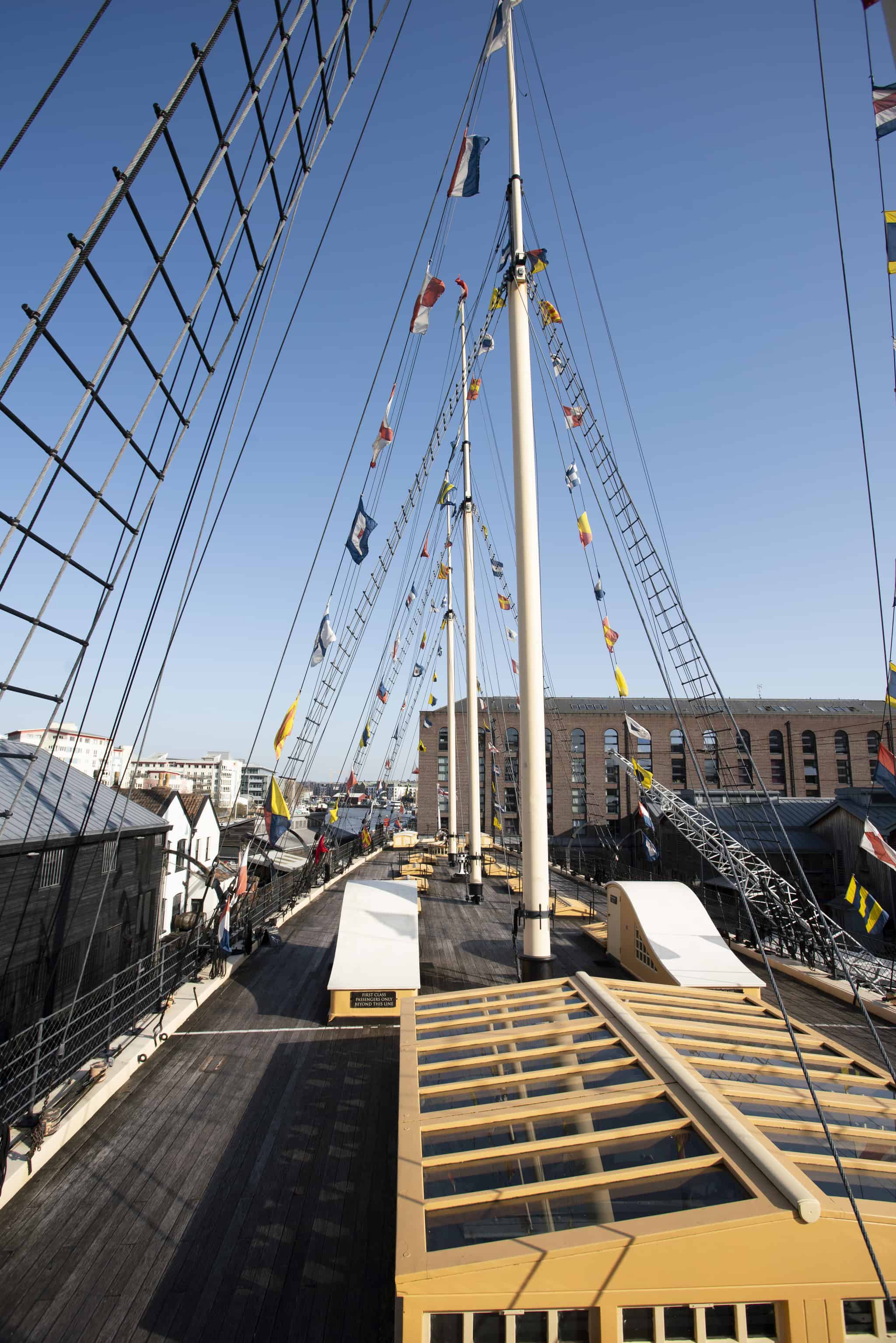Through the eyes of the SS Great Britain in Sparrow Cove
I visited Brunel’s SS Great Britain in Bristol a few years ago and was impressed by the hard work on her restoration. I have also often sailed past Sparrow Cove, leaving Stanley to reach the open sea, having worked on fishing boats and expedition vessels heading to Antarctica. Standing on-board the SS Great Britain, I tried to imagine what life on-board her would have been like and how she would have sailed in the notoriously turbulent seas surrounding the Falkland Islands. My work now involves working with wildlife, including penguins, for Falklands Conservation and in this short blog, I have tried to recreate the sounds and sights of the wildlife in Sparrow Cove through the eyes of the SS Great Britain during her time resting there.
Today there are gentle waves, but on other days terrible winds howl through her damaged body, and icy cold waves crash over the bow. On these turbulent days, wind-loving seabirds soar overhead. Thousands of sooty shearwaters pass over, circling in the sky before finally descending into tussac grass to find burrows that reach deep in to the peat. When the waves finally settle slippery fronds of the sea kelp tickle her hulk, sea lions play in this underwater forest and a family of Commerson’s dolphins pass by every day. Once even a huge sei whale swam past. On the surface above cormorants, ducks and gulls bob up and down, they remain close to the shore and dive in the kelp forests to feed on small fish and crustaceans. The best part of the day is waiting for the return of the gentoo penguins. They nest nearby on the shore in Sparrow Cove and depart for the day’s fishing early at dawn. In the evening the first penguins return, their stomachs are full of fish and squid to feed to their demanding and hungry chicks. The penguin numbers grow and grow as more of them raft up together and porpoise to the shore, ever vigilant to avoid the sea lions. They surf ashore, they seem to enjoy this, or are just happy to be finally safe on dry land. Once on the beach, they make a steady procession to the colony. The noises, squawks and squabbles of the penguins fills the air and the breeze carries the smell of their pungent fishy guano. Here at Sparrow Cove, there is so much wildlife to see. Occasionally the odd boat passing through on its way to and from Stanley. In the spring and summer time a few shepherds gather up the sheep that graze on the hills and the odd family comes down to the beach for a picnic. But mostly the days are filled with sounds and sights of the abundance of birds, seals and dolphins. They fill the skies and the sea and will remain a part of the SS Great Britain back at her home in Bristol.
Gentoo penguins are widespread across the Falkland’s coastline with Falklands Conservation annually monitoring their populations. Falklands Conservation also researches the sei whales that regularly use the waters near to Sparrow Cove, as well as being involved with habitat restoration such as planting the native tussac grass that much of the wildlife relies on.
Find out more about the Falklands Conservation here or find them on Facebook. Thank you to Sarah Crofts at Falklands Conservation for writing this blog.



